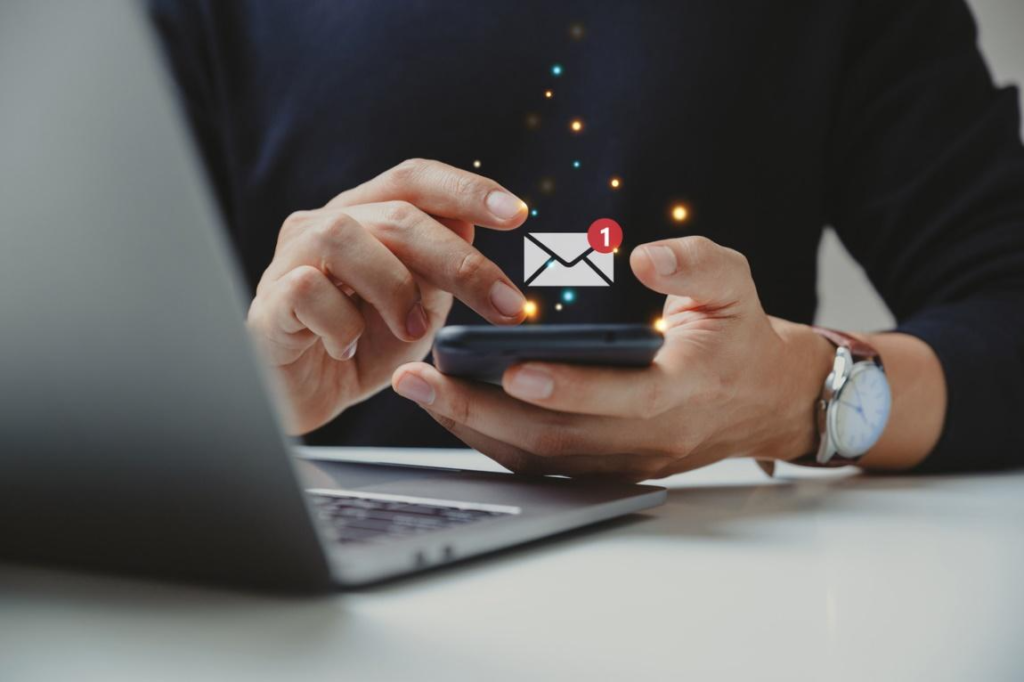Successful digital marketing strategies involve using different tools within a comprehensive marketing plan. Many tools are at an online business’s disposal, but one easily forgotten is email marketing campaigns.
What is Email Marketing?
Emails are a tool for business marketing that involves sending mass emails to a list of consenting contacts. This marketing technique is useful for both B2C and B2B businesses and has many benefits for companies wanting to support their existing marketing plans. The following are four tips on getting started planning your email marketing strategy.
1. Establish Goals
Like any content marketing plan, email marketing should be designed around specific goals so you can plan your content accordingly. The current goals of your business will be a good source of inspiration when starting to plan the purpose of your email marketing. Consider how your email marketing campaign can support your overall business goals. For instance, increasing sales, engagement, conversions, or increasing brand awareness.
Defining specific email campaign goals that align with your overall business goals will help support a comprehensive marketing plan across multiple marketing campaigns. For instance, if your goal is to increase sales, the objectives of your email campaign might be to increase the number of purchases made by current customers or bring more visitors to your website.
Additionally, you should monitor the results of your email campaigns regularly using data and analytics and adjust your strategy to ensure you’re reaching your objectives.

2. Who Is Your Audience?
Email marketing audiences will generally include a combination of existing and potential customers who have shown interest by signing up for your mailing list.
Existing customers are a valuable audience for your campaigns, as you are already certain they are interested in your products or services. However, emails catered for this audience can ignore brand awareness and instead focus on sharing promotions, pricing updates and new products to help encourage returning business.
Potential customers are also an important audience but benefit from a different approach. This audience must be exposed to sufficient brand awareness to ensure your company is the first they consider for their purchases. Additionally, relevant and engaging content will build trust and interest in your services over time and encourage their engagement and eventual conversion.
3. Plan Your Content
Planning the structure and content of your emails is essential to creating content that converts the reader into a customer. However, this does involve taking the previous two steps into account; for example, a B2C-designed email will be at a disadvantage if the intended audience is B2B companies.
You should also consider every aspect of your email’s presentation, including the subject line and preview text. These two elements will be the first impressions of your email to the receiver and will largely dictate if it will be opened or discarded. The subject line of your email should successfully summarise the email’s contents in roughly ten words in the form of an attractive headline. The preview text should be below 40 characters and promote the email’s contents from a different angle to the subject line.
The contents of your email should be brief and direct to the point of the email. After the initial engaging sentences to grab the reader’s attention, you can let the attached images, links, and CTA (call to action) convey the message to them. This often means creating aesthetically pleasing, high-definition images related to your products and services that can be added to the content to fill the large white spaces on the screen. The text and imagery should match the overall tone of your brand but remain focused on the purpose of the email, such as promoting a seasonal sale or announcing new products.

4. What Do You Want Them to Do Next?
A CTA is an excellent tool for guiding your audience to where you want them to be. They are a common tool on website blogs and social media, but they should also be used for email campaigns. For example, if your email aims to alert existing customers of a new product release they might be interested in, then this email’s CTA should link to the page on your website where they can purchase that product.
The purpose of the email will always dictate the CTA you choose, and it will be presented in the form of a weblink connected to a piece of text, imagery or even a video preview.

Support Your Business with Email Marketing
The company’s email list is the most engaged and receptive audience for most email marketing campaigns. They are more likely to open, read, and engage with the content because they have already demonstrated an interest in the company by signing up for the email list. As a result, businesses can increase their audience’s level of trust, loyalty, and advocacy by providing them with useful and relevant content.
Learn more about the benefits of email marketing from the many resources we have on our website. Alternatively, contact us to ask questions about email marketing to support your business.




